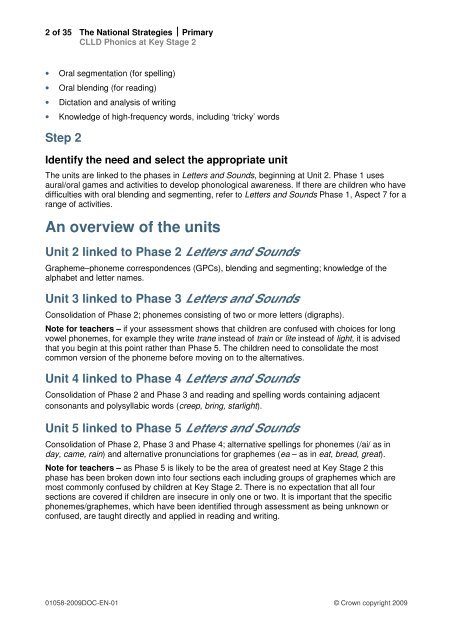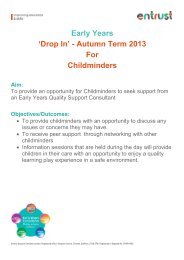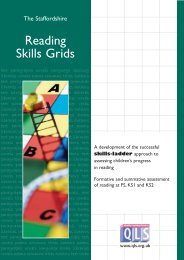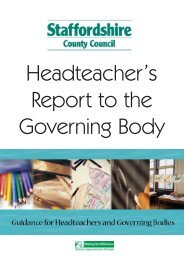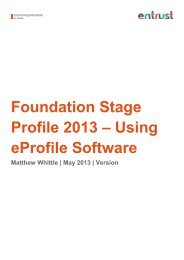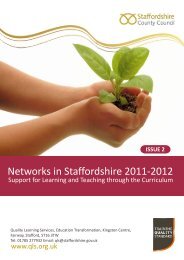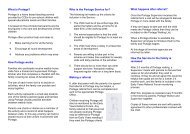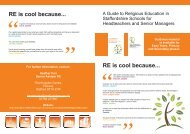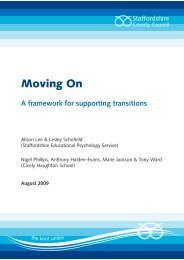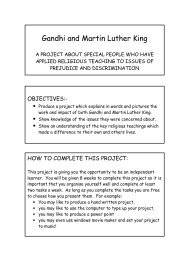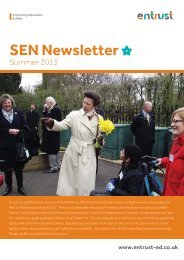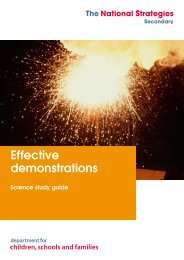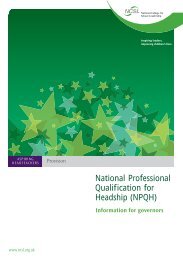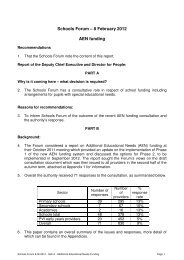CLLD Phonics at Key Stage 2 - School-Portal.co.uk
CLLD Phonics at Key Stage 2 - School-Portal.co.uk
CLLD Phonics at Key Stage 2 - School-Portal.co.uk
Create successful ePaper yourself
Turn your PDF publications into a flip-book with our unique Google optimized e-Paper software.
2 of 35 The N<strong>at</strong>ional Str<strong>at</strong>egies ⏐ Primary<br />
<strong>CLLD</strong> <strong>Phonics</strong> <strong>at</strong> <strong>Key</strong> <strong>Stage</strong> 2<br />
• Oral segment<strong>at</strong>ion (for spelling)<br />
• Oral blending (for reading)<br />
• Dict<strong>at</strong>ion and analysis of writing<br />
• Knowledge of high-frequency words, including ‘tricky’ words<br />
Step 2<br />
Identify the need and select the appropri<strong>at</strong>e unit<br />
The units are linked to the phases in Letters and Sounds, beginning <strong>at</strong> Unit 2. Phase 1 uses<br />
aural/oral games and activities to develop phonological awareness. If there are children who have<br />
difficulties with oral blending and segmenting, refer to Letters and Sounds Phase 1, Aspect 7 for a<br />
range of activities.<br />
An overview of the units<br />
Unit 2 linked to Phase 2 Letters and Sounds<br />
Grapheme–phoneme <strong>co</strong>rrespondences (GPCs), blending and segmenting; knowledge of the<br />
alphabet and letter names.<br />
Unit 3 linked to Phase 3 Letters and Sounds<br />
Consolid<strong>at</strong>ion of Phase 2; phonemes <strong>co</strong>nsisting of two or more letters (digraphs).<br />
Note for teachers – if your assessment shows th<strong>at</strong> children are <strong>co</strong>nfused with choices for long<br />
vowel phonemes, for example they write trane instead of train or lite instead of light, it is advised<br />
th<strong>at</strong> you begin <strong>at</strong> this point r<strong>at</strong>her than Phase 5. The children need to <strong>co</strong>nsolid<strong>at</strong>e the most<br />
<strong>co</strong>mmon version of the phoneme before moving on to the altern<strong>at</strong>ives.<br />
Unit 4 linked to Phase 4 Letters and Sounds<br />
Consolid<strong>at</strong>ion of Phase 2 and Phase 3 and reading and spelling words <strong>co</strong>ntaining adjacent<br />
<strong>co</strong>nsonants and polysyllabic words (creep, bring, starlight).<br />
Unit 5 linked to Phase 5 Letters and Sounds<br />
Consolid<strong>at</strong>ion of Phase 2, Phase 3 and Phase 4; altern<strong>at</strong>ive spellings for phonemes (/ai/ as in<br />
day, came, rain) and altern<strong>at</strong>ive pronunci<strong>at</strong>ions for graphemes (ea – as in e<strong>at</strong>, bread, gre<strong>at</strong>).<br />
Note for teachers – as Phase 5 is likely to be the area of gre<strong>at</strong>est need <strong>at</strong> <strong>Key</strong> <strong>Stage</strong> 2 this<br />
phase has been broken down into four sections each including groups of graphemes which are<br />
most <strong>co</strong>mmonly <strong>co</strong>nfused by children <strong>at</strong> <strong>Key</strong> <strong>Stage</strong> 2. There is no expect<strong>at</strong>ion th<strong>at</strong> all four<br />
sections are <strong>co</strong>vered if children are insecure in only one or two. It is important th<strong>at</strong> the specific<br />
phonemes/graphemes, which have been identified through assessment as being unknown or<br />
<strong>co</strong>nfused, are taught directly and applied in reading and writing.<br />
01058-2009DOC-EN-01 © Crown <strong>co</strong>pyright 2009


